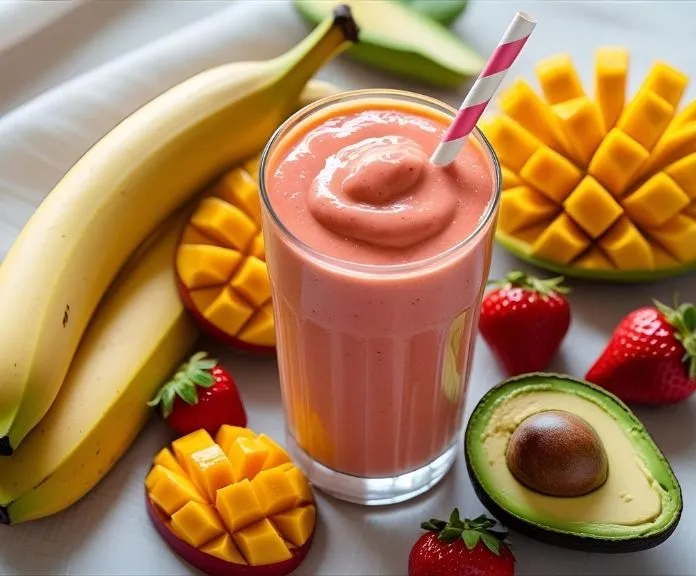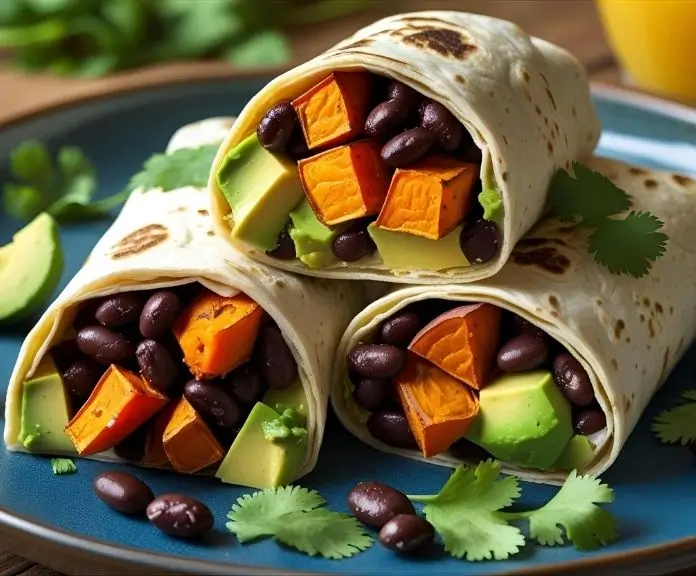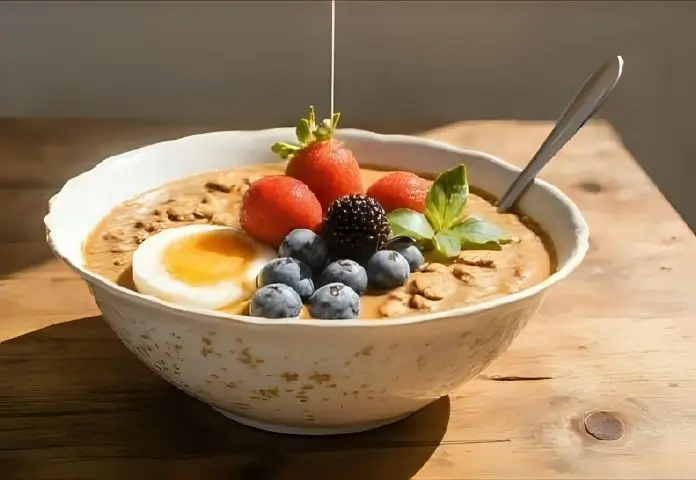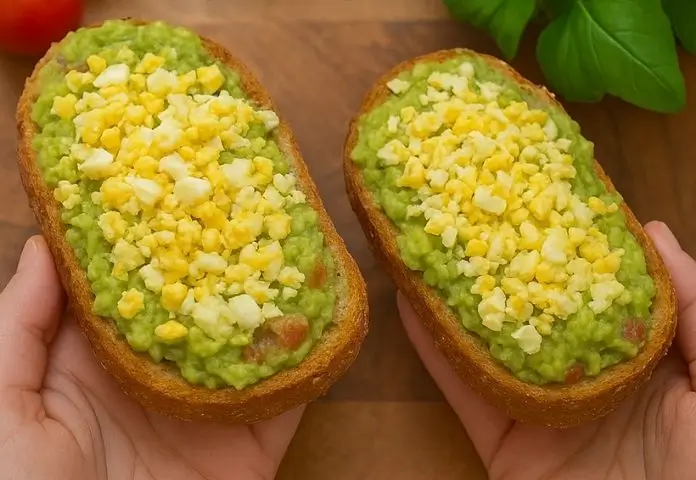Fruit Smoothie Without Yogurt—Creamy, Simple, Refreshing
A fruit smoothie without yogurt is indeed possible, and it can still be silky, loose, and completely satisfying. In a world where yogurt is often considered a “must-have” smoothie staple, what happens when you are out of it … or just want to avoid the dairy completely? Does your creamy dream fall into the dirty water? Absolutely not.
Creating a fruit smoothie without yogurt is not only notable—it is deliciously free. With the correct combination of ripe fruits, plant-based materials, and clever combination tricks, you can prepare a vibrant, nutritious drink that rivals any curd-based version. Whether you are lactose intolerant, vegetarian, or simply craving a fruit smoothie without yogurt, this recipe guide caters to your needs.
And if you are under the weather, you might be looking for something soothing, or perhaps you’re just wondering, “Is ketchup a smoothie?” (Don’t worry, we’ll get there.) This article will walk you through a smoothie without yogurt, which is fresh and full of taste.
So grab your blender and break every ‘smoothie rule,’ one delicious sip at a time.
How to Make a Fruit Smoothie Without Yogurt at Home
Creating a fruit smoothie without yogurt can sound like a challenge, especially if you always rely on yogurt for that familiar creamy texture. But eliminating dairy does not mean sacrificing nutrition or flavor. In fact, eliminating yogurt allows for greater creativity, improved digestion, and the use of plant-based materials. With the right fruits, fluids, and techniques, you can make a smoothie that is as smooth and satisfactory as anything that receives a juice bar—if not better.
Let’s examine each step in detail.
Start with the Right Fruits
The fruit is just more than the taste—this is the backbone of your smoothie. Fruit Smoothie When not using yogurt for thickness, you need fruits that serve two purposes: they should taste excellent and also contribute to the texture.
Bananas are a go-to for a reason. They mix easily and provide naturally sweet, thick stability. Mango is another top pick; they bring a tropical nature and a velvet body that rival any dairy base. Berries are excellent for adding a strawberry, blueberry, or raspberry color, antioxidants, and a fresh spice. They’re less creamy alone, so pair them with soft fruits like bananas or pears.
Add Liquid Without Dairy
Smoothies require movement. This is where your liquid base comes from. But when you are making a fruit smoothie without yogurt, it is important to choose a liquid that supplements your ingredients in no time.
Unsweetened almond milk is a solid choice—it’s light, neutral, and blends easily. Oat milk adds a naturally creamy consistency that works especially well in breakfast smoothies. Coconut milk or coconut water adds a gentle tropical flavor while keeping your smoothie light and hydrating. And when simplicity is key, even cold filtered water can do the job—especially if your fruit lineup includes juicy picks like watermelon or oranges.
Begin with roughly half a cup of liquid, then add more if your smoothie needs loosening up. Add more if your blender struggles or if you prefer a thinner texture.
Go Creamy Without Yogurt
This is the place where a dairy-free smoothie can actually shine. There are many plant-based ways to achieve cream—to bring their own nutrition
Frozen banana is the easiest option. When mixed, it creates a rich, custard-like texture and adds the right amount of sweetness. Avocado may look unusual in a fruit smoothie without yogurt, but it is surprisingly neutral in taste and makes everything velvety. It is also filled with healthy fat, which can help you feel full for a long time.
Those who prefer a bit of body in their fruit smoothie, without the miracles of chia seeds or rolled oats, can incorporate avocado. Chia seeds and rolled oats absorb the liquid and enhance the flavor of the smoothie. Nut butter—such as almonds or cashews—can also increase the cream, although they are best used to keep the calorie count in check.
Blend Like a Pro
A common mistake in making a fruit smoothie without yogurt is just bouncing everything in a blender and starting. While it works sometimes, the order in which you add material—and the way you mix—can dramatically affect the final texture.
Start with your liquid base. This keeps the blender blades from jamming up as everything mixes together smoothly. Next, add soft materials such as bananas, avocados, or soaked oats. Follow it with your frozen fruits or ice, and finish with any powder, seeds, or walnut butter.
If you are using a high-speed blender, blend on low for a few seconds, then ramp up until everything becomes smooth. For standard mixtures, start with large pulses to break large chunks, then mix completely. You might need to pause and scrape down the sides or pour in a little extra liquid to keep things blending smoothly.
Please take your time here, as rushing this process may result in an uneven texture or overworked blenders. Once it is mixed, taste it and make any necessary adjustments. Very thick? Add a little more liquid. Very thin? Some additional frozen fruits or a teaspoon of oats can cure that fast.
Fruit Smoothie Without Yogurt for When You’re Sick
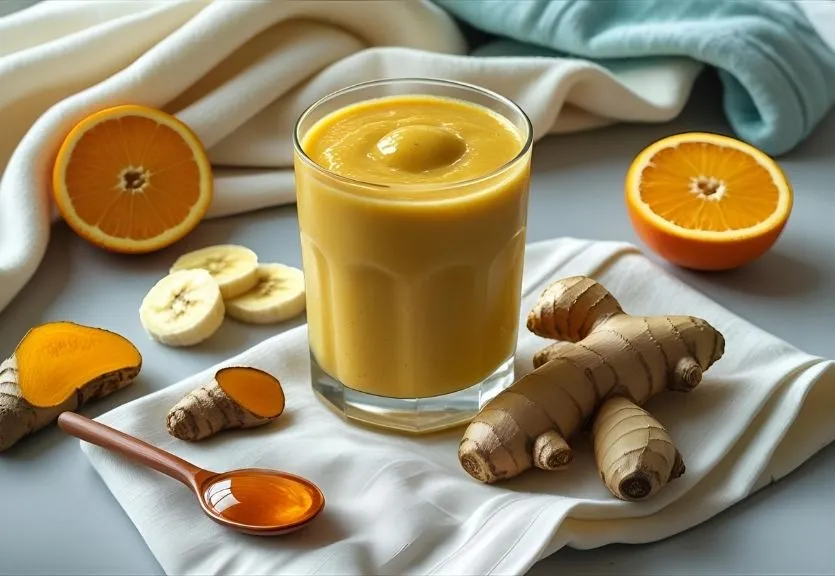
When the disease attacks, the last thing you want is to be heavy and have difficulty weighing your body. In these moments, a fruit smoothie without yogurt can be a soft yet powerful partner—considering your system, distributing important nutrients, and offering comfort in every sip. But not all smoothies are made the same, especially when you nurse a cold or flu. Knowing which ingredients to embrace, which to escape, and how you feel and recover can make a significant difference.
Are Smoothies Good When Sick?
Absolutely. Fruit smoothies without yogurt serve as a convenient and efficient way to nourish your body when your appetite decreases and you have difficulty swallowing solid foods. Because they are mixed, smoothies require minimal effort to consume and digest, allowing your body to focus its energy on healing rather than digestion.
In addition, when thinking is prepared, smoothies pack a serious nutrition punch. Fill them with rich fruits in vitamin C—such as oranges, strawberries, or kiwis—antioxidants that support your immune system and can help reduce the duration of the disease. Hydration is another important factor during the disease, and it goes smoothly thanks to the high water content from fruits and added fluids.
However, it is important to select the material wisely to maximize the profit and avoid irritation.
Immunity-Boosting Ingredients to Add
When creating a fruit smoothie without yogurt for those sick days, you can increase your recovery process, including immune-enhancing elements.
- Ginger: Known for its anti-inflammatory and soothing properties, ginger can help ease nausea and reduce inflammation. A small piece or a teaspoon of freshly grated ginger goes a long way in adding warmth and healing qualities.
- Turmeric: This golden spice contains curcumin, a powerful antioxidant that may aid in reducing symptoms associated with colds and flu. Adding a pinch to your smoothie can support your immune defenses.
- Orange or Citrus Fruits: Packed with Vitamin C, they’re essential for immune function. But if your throat is irritated, it’s best to enjoy it in small amounts.
- Spinach or Kale: Dark leafy greens provide vitamins and minerals that support overall health and immune resilience. Their mild flavor blends well when combined with sweeter fruits.
- Honey isn’t just a natural sweetener—it also has antimicrobial benefits and can help calm a scratchy throat. A teaspoon stirred into your smoothie can be both comforting and beneficial.
By thoughtfully layering these ingredients, your smoothie becomes more than just a drink—it transforms into a healing tonic.
What to Avoid in Sick-Day Smoothies
While smoothies can be beneficial, some ingredients can do more harm than good when you are feeling unwell.
- Dairy: Many people experience mucus production or digestive dullness from dairy, which can increase the symptoms of a cold. It is often recommended to avoid yogurt or milk during illness to prevent discomfort
- Excess Sugar: Adding too much sugar or sweetness can suppress immune function and feed harmful bacteria or viruses. Stick to the natural sugars found in whole fruits and use sweetness.
- Too Much Citrus: Although vitamin C is helpful, acidic fruits like lemon, lime, or grapes can cause a sore throat or sore throat. If you crave taste, dilute citrus with soothing materials such as bananas or avocados.
- Highly Fibrous Ingredients: While fiber is generally healthy, during acute illness, heavy fiber can sometimes cause digestive discomfort or inflammation. Be alert with large amounts of raw greens or seeds.
Keeping these tips in mind will ensure that your fruit supports recovery rather than slowing it. Fruit Smoothie Without Yogurt
Easy Ways to Customize Your Fruit Smoothie Without Yogurt
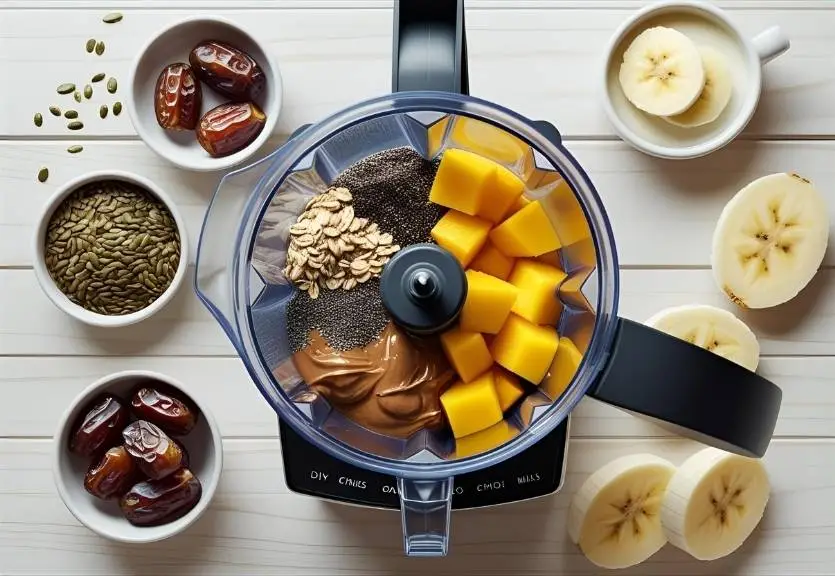
One of the best things about making a fruit smoothie without yogurt is how easily you can tailor it to your personal taste, nutritional needs, or even your mood. Whether you crave power packs with something thick and hearty, sweet and fresh, or nutritious, a handful of simple adjustments can turn a basic smoothie into your right mixture. Here are ways to customize the smoothie composition to suit your preferences.
Make It Thicker or Thinner
The texture of a smoothie can significantly impact its overall experience. If you find your fruit smoothie without yogurt, the fix is surprisingly simple. Frozen fruits—especially bananas, mangoes, or berries—can add that tasteful thickness without water. Tossing in a spoon of rolled oats or a spoon of ground also creates the body and adds a pleasant, nutty undertaking.
On the other hand, if your smoothie feels too heavy or dense, do not hesitate to dilute it. Additional liquid—whether it is almond milk, coconut water, or even plain filtered water—can lighten the texture and make the drink fresher. The key is the balance: Gently add small amounts to your liquid, and combine in the middle, unless you find the correct stability for your palate.
Sweeten Naturally
Forget refined sugars or artificial sweeteners. The natural sweetness found in hole foods is not only healthy, but also adds depth to the taste profile of your smoothie. Medjul dates are a wonderful option; they are easily dissolved when mixed and lend to caramel-like prosperity. Ripe bananas are another classic, sweetening Fruit Smoothie Without Yogurt when adding cream and nutrients.
Fruit Smoothie Without yogurt, you do not need any additional sweetener. Many fruits—pineapple, mango, or even cooked peach—carry enough natural sugar to satisfy their sweet tooth. Let the natural sweetness of the fruit take the spotlight—your taste buds will love it.
Boost Nutrition
If you want your fruit smoothie without yogurt to just taste delicious and add a dense booster of nutrients, then there is a way to go. Chia seeds are small but powerful: omega-3 is packed with fatty acids, fiber, and protein; they also help to thicken your smoothie and help create a silky texture when soaked. Flax food provides the same benefits, especially for digestive health, and it has a taste of subtle walnuts that complements most fruit combinations.
For people wishing to increase their protein intake, from plant-based protein powder pieces to ganja or brown rice, originally blend into your fruit smoothie without yogurt. They add creaminess without changing the taste significantly, making them ideal for the recovery of exercise or simply keeping you full for a long time.
These subtle additions transform your basic fruit smoothie into a nutritional powerhouse, perfectly tailored to your lifestyle.
How Do I Make a Fruit Smoothie Without Yogurt That Still Tastes Creamy?
When you think of a fruit smoothie without yogurt, cream usually comes to mind—a smoothie with a luscious texture that feels enjoyable and satisfactory. But what if you want to leave yogurt completely? You can get a silky mouthfeel without dairy, whether for diet reasons or preference. The key is selecting the right ingredients and techniques that replicate the creamy texture of yogurt without sacrificing taste or consistency.
Use Texture-Rich Fruit
Some fruits naturally lend themselves to creating a thick, velvet texture, which builds a creamy fruit smoothie without yogurt. With your buttery fruit and tropical sweetness, you can immediately elevate the flavor of your smoothie. Bananas are a classic option—not only do they thicken the mixture, but their sweet sweetness masks any bitterness from greens or other add-ins.
The pear is sometimes ignored but is worth a location in your smoothie toolkit. Their juicy yet soft meat is mixed in a smooth, almost custard-like stability that rivals more traditional creamy bases. The key is to use ripe fruits, as their soft texture becomes more pleasant and contributes to a rich, prestigious texture.
Blend in Silky Add-Ins
If you want to push the cream to the next level, it may be a wonderful idea to include some plant-based materials. Soaked cashews are a favorite among those who are both vegetarian and dairy-free eaters; after soaking to soften, they mix in a naturally thick and velvety cream that is almost unique from yogurt in texture.
Coconut cream, a thick layer that forms on top of canned coconut milk, offers a rich texture and subtle tropical flavor that complements the beauty of fruits. It provides nourishment without the heaviness of dairy and is ideal for those seeking a detox treatment.
For an unexpected but effective turn, soft silken tofu can be mixed into smoothies; a neutral flavor can be lent, packing in a protein boost and creamy mouthfeel. This is especially useful if you want a smoothie that seems hearty and satisfactory without adding a strong taste.
Don’t Forget the Ice
While frozen fruits do a lot to lift heavy in terms of texture, ice is a simple but necessary component in creating that cool, fresh cream that we combine with smoothies. It adds volume and coldness, giving the smoothie a thick consistency, especially when replacing frozen yogurt or dairy ice.
The ice can also help balance sweet ingredients, making each sip crisp instead of cloying. The trick is to pulse the ice at the end of the conclusion so it doesn’t get too crushed or wet but adds the right crunch and coldness.
Is Ketchup a Smoothie? (And Other Smoothie Myths)
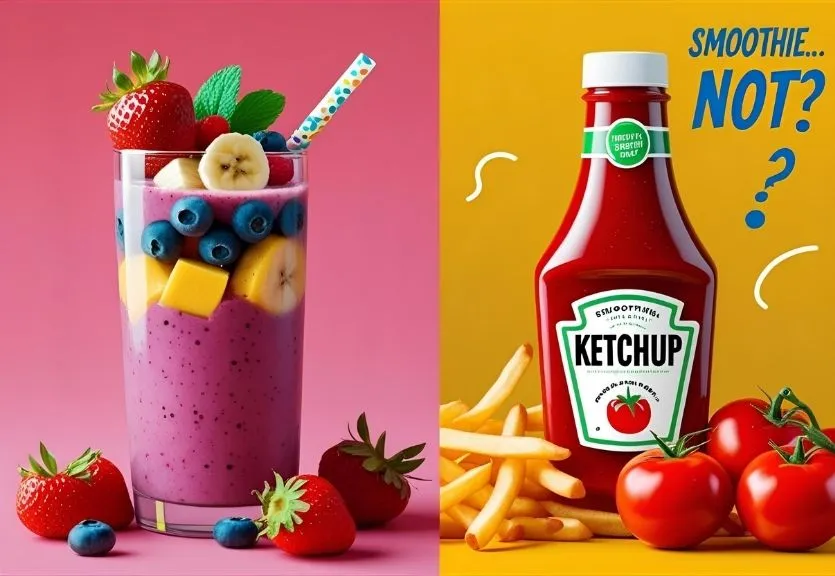
Fruit smoothies without yogurt have become a favorite head in the kitchen around the world, celebrated for their vibrant colors, rich tastes, and perceived health benefits. However, the popularity of fruit smoothies has led to confusion and occasionally bizarre questions. A question that usually raises eyebrows—and some chuckles—is whether ketchup qualifies as a smoothie. At first glance, it may seem foolish, but it highlights how important it is to understand how it really defines a smoothie—and to separate the fact from the story.
If you are eager to make authentic smoothies and want to detect creative, delicious dishes, go to Ammyrecipes for motivation and tons of tips!
What Defines a Smoothie?
In its simplest form, a fruit smoothie without yogurt is a drink made by combining the whole fruits—or sometimes vegetables—with a liquid base and is often served cold. The smoothie is prized for its fresh, natural ingredients and creamy, potable stability. The main idea is that the material is raw, complete, and fresh, which contributes to a nutritious and fresh drink.
On the other hand, ketchup does not fit this detail. While it is actually a mixed product, ketchup is cooked, preserved, and mainly made with added tomatoes, sugars, vinegar, and spices. It is designed as a thick touch and a masala instead of a fresh drink.
Why Ketchup Isn’t a Smoothie (Technically)
Let us examine the reasons why the Fruit Smoothie Without Yogurt and the Dahi family are not considered smoothies. First, the ketchup is cooked and preserved—its content undergoes processing that replaces natural enzymes and nutrients that you find in raw fruits and vegetables. This heat treatment is important for shelf stability but removes the “freshness” factor central to smoothies.
Second, the main component of ketchup is tomato, often classified as a fruit, but it is used in a highly concentrated, experienced form here. Unlike smoothies that are mixed with whole fruits and vegetables—including skins and seeds—ketchup is filtered and mixed with vinegar, salt, and sugar to make a specific taste profile.
Fun Smoothie Myths You Should Ignore
Fruit smoothies without yogurt have a cult following, but they’re also wrapped in myths that can mislead beginners. Here are a few common misconceptions:
- “Smoothies must have yogurt.” False! As you’ve probably guessed, a fruit smoothie without yogurt can be just as creamy and delicious. Using ingredients like frozen bananas, avocados, or soaked chia seeds can give you that rich texture without any dairy. For creative dairy-free recipes, visit our Dairy-Free Smoothies Collection.
- “Smoothies are always healthy.” Not necessarily. While many smoothies are packed with nutrients, others can be calorie bombs loaded with added sugars, syrups, or fruit juices that spike blood sugar. The key is to blend whole fruits, control sweeteners, and include protein or healthy fats for balance.
- “You can blend anything into a smoothie.” While blending is versatile, some combinations—like ketchup in your smoothie—just don’t work flavor-wise or nutritionally.
By separating these myths from facts, you’re better equipped to enjoy smoothies as a nourishing, enjoyable part of your diet.
If you want to dive deeper into crafting the perfect fruit smoothie without yogurt or explore creative recipe ideas, don’t forget to visit AmmyRecipes regularly. We provide expert tips, nutrition advice, and fresh inspiration for smoothie lovers of all kinds.

